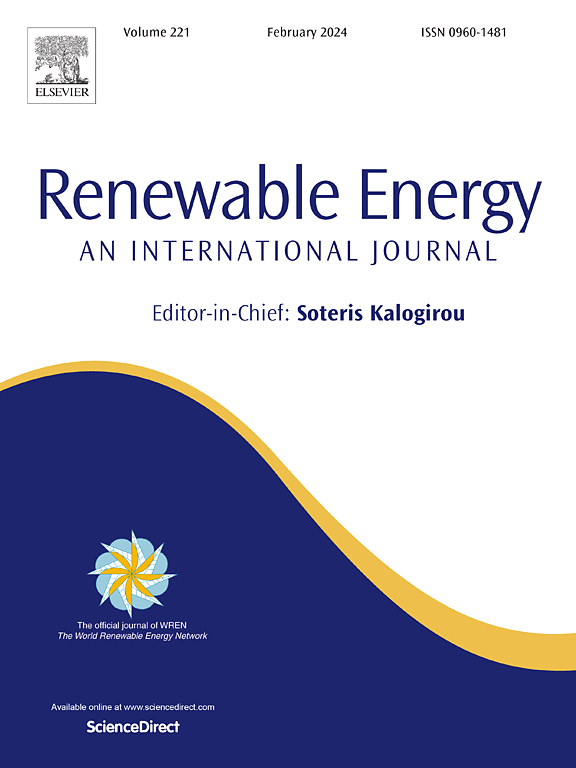Vortex flow plasma reforming for hydrogen production from atomized water-methanol mixture and parameter optimization using RSM and ANN-GA
IF 9
1区 工程技术
Q1 ENERGY & FUELS
引用次数: 0
Abstract
Hydrogen energy is the cleanest energy. It has many applications in different sectors, such as power generation, industrial, and transportation. The conventional H2 production methods are energy-consuming and generate a huge amount of pollution. Hence, a non-polluting method for H2 production is necessary to utilize the benefit of cleaner fuel. The current work used a vortex flow plasma reforming process to generate H2 from the methanol-water mixture. The process involved plasmolysis of methanol-water mixture to produce H2. Additionally, the process parameters like feed flow rate (0.5–4.5 LPM), methanol concentration (5–35 %) and voltage (4–8 V) were optimized using RSM and ANN-GA models, and the influencing parameters were determined using the ANOVA test. The results showed an optimal hydrogen production rate of 229.2 mol/day (for 0.3 MHz), 265.0 mol/day (for 1.7 MHz) and 285.8 mol/day (for 2.4 MHz) for RSM at 4.5 LPM and 35 % methanol concentration while 267.0 mol/day for ANN-GA at 4.5 LPM, 33.8 % methanol concentration and 7.4 kV input voltage. The optimized parameters were used in the experimental setup, and an error of 4–7 % was observed for the RSM model and 2.5 % for the ANN-GA model. Therefore, the ANN-GA model showed better reliability than the RSM model. Further, the results may be used for commercial-scale H2 production for various applications.
旋流等离子体重整雾化水-甲醇制氢及参数优化
氢能是最清洁的能源。它在不同的领域有许多应用,如发电、工业和运输。传统制氢方法耗能大、污染大。因此,一种无污染的制氢方法是必要的,以利用清洁燃料的好处。目前的工作是利用涡流等离子体重整工艺从甲醇-水混合物中产生H2。该工艺涉及甲醇-水混合物的质解生成H2。采用RSM和ANN-GA模型对进料流量(0.5 ~ 4.5 LPM)、甲醇浓度(5 ~ 35%)、电压(4 ~ 8 V)等工艺参数进行优化,并通过方差分析确定影响参数。结果表明,在4.5 LPM、35%甲醇浓度下,RSM的最佳产氢速率分别为229.2 mol/d (0.3 MHz)、265.0 mol/d (1.7 MHz)和285.8 mol/d (2.4 MHz),而ANN-GA在4.5 LPM、33.8%甲醇浓度和7.4 kV输入电压下的最佳产氢速率为267.0 mol/d。将优化后的参数用于实验设置,RSM模型的误差为4 - 7%,ANN-GA模型的误差为2.5%。因此,ANN-GA模型比RSM模型具有更好的可靠性。此外,该结果可用于商业规模的氢气生产,用于各种应用。
本文章由计算机程序翻译,如有差异,请以英文原文为准。
求助全文
约1分钟内获得全文
求助全文
来源期刊

Renewable Energy
工程技术-能源与燃料
CiteScore
18.40
自引率
9.20%
发文量
1955
审稿时长
6.6 months
期刊介绍:
Renewable Energy journal is dedicated to advancing knowledge and disseminating insights on various topics and technologies within renewable energy systems and components. Our mission is to support researchers, engineers, economists, manufacturers, NGOs, associations, and societies in staying updated on new developments in their respective fields and applying alternative energy solutions to current practices.
As an international, multidisciplinary journal in renewable energy engineering and research, we strive to be a premier peer-reviewed platform and a trusted source of original research and reviews in the field of renewable energy. Join us in our endeavor to drive innovation and progress in sustainable energy solutions.
 求助内容:
求助内容: 应助结果提醒方式:
应助结果提醒方式:


